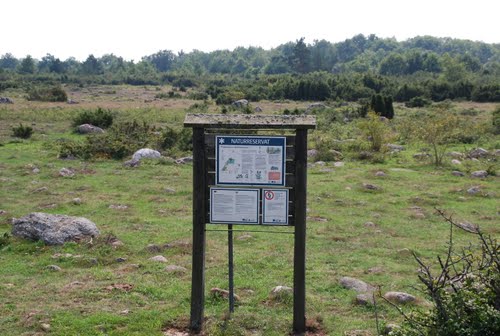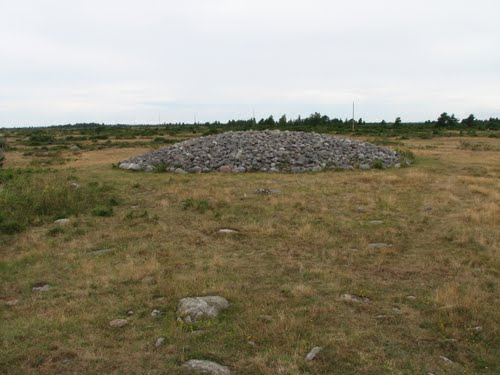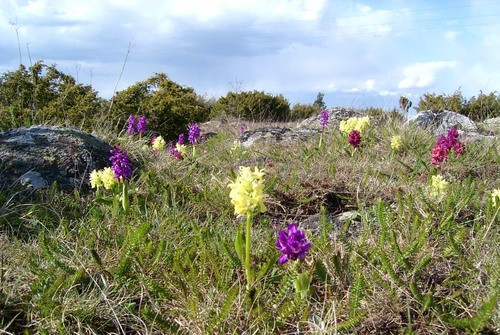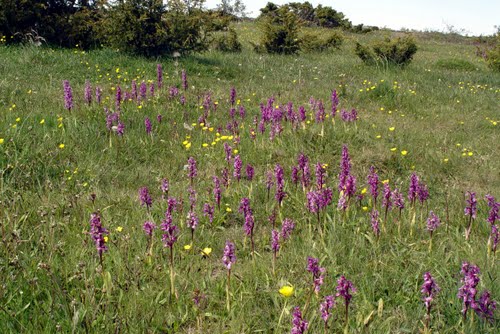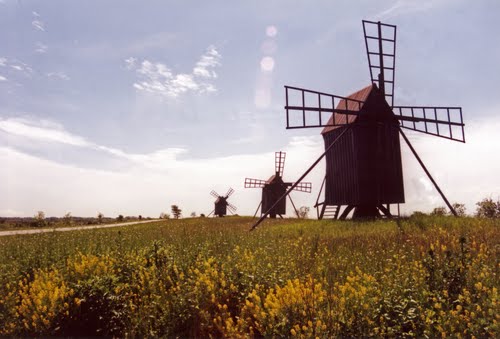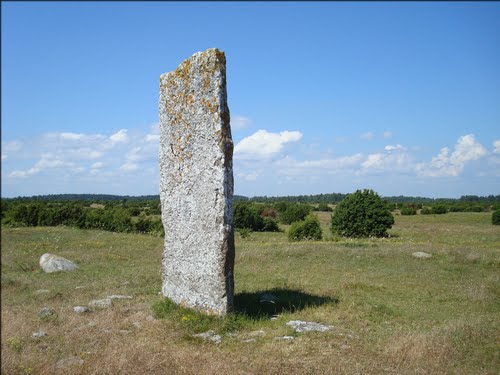Stora Alvaret is a limestone barren plain on the island of Oland, Sweden. Because of the thin soil mantle and high pH levels, a great assortment of vegetation is found including numerous rare species. Stora Alvaret has been designated as a World Heritage Site by UNESCO due to its extraordinary biodiversity and prehistory. The area of this formation exceeds 260 km², making it the largest such expanse in Europe and comprising over one fourth of the land area of the island. Stora Alvaret is not devoid of trees, contrary to a common misconception; in fact, it holds a variety of sparse stunted trees akin to a pygmy forest. Stora Alvaret is a dagger shaped expanse almost 40 kilometres long and about 10 kilometres at the widest north end.
Geological origins
The limestone plain was created by glacial action from earlier ice age advances. The limestone formation itself was created about 500 million years ago in more southerly seas. Gradually hardening into limestone and drifting northward, the limestone of Stora Alvaret contains a rich fossil record of some of the marine creatures who contributed to it. For example, orthoceratites are found in some of the present day structures on the island.
Only as recently as 11,000 years ago did the first portions of the island of Oland emerge from the Baltic Sea, after the overpressure of the last glaciers was relieved by melting. Over the next several thousand years, more ice melted and the first wave of large mammals including humans migrated across the ice bridge from the mainland. Finally a thin soil mantle was formed by plant colonisation of the bare limestone and some wind driven deposition, to create the alvar formation of the present. In many places the limestone has no soil whatsoever upon it.
Prehistoric man
The best known early paleolithic settlement occurs at Alby, situated on the east coast of the island, where excavations have revealed vestiges of wooden huts around a prehistoric lagoon. Artefacts retrieved include evidence of bear, marten, seal and porpoise, but also reveal hunting and gathering technologies through discovery of bone spears, elk antler harpoons and flint.
Evidence of later ringforts abounds including the most well known site at Eketorp. In the Bronze Age and early part of the Iron Age, extreme pressure was exerted on the limited tree species growing on Stora Alvaret and its margins. Jannson suggests that this disappearance of trees caused a mysterious evaporation of humans about 500 AD which is documented at Eketorp and other sites. It is thought provoking to imagine that the expanded human population may have exceeded its carrying capacity of this place by about 500 AD. Later, about 800 to 1000 AD various Viking settlements appeared on the fringe of Stora Alvaret.

